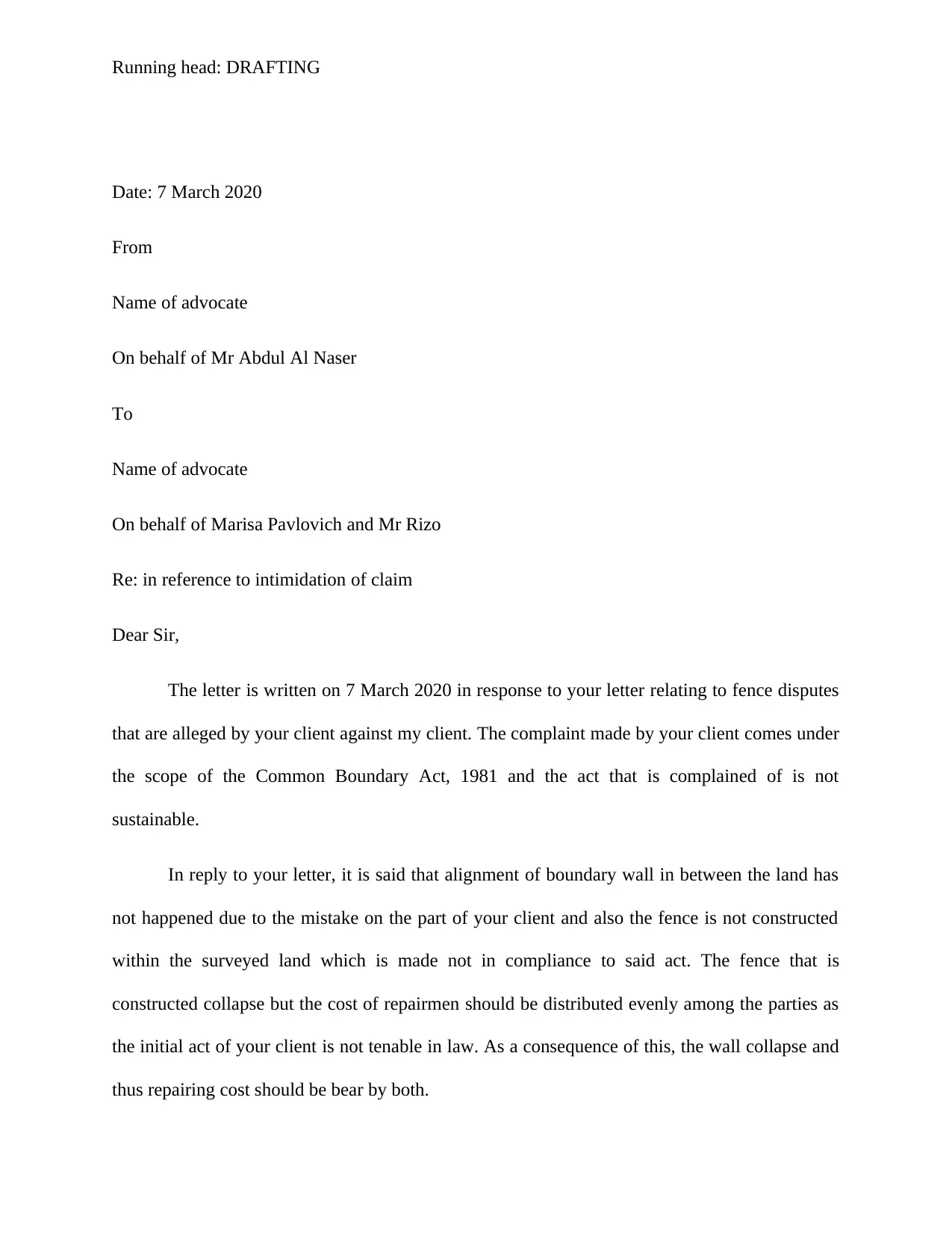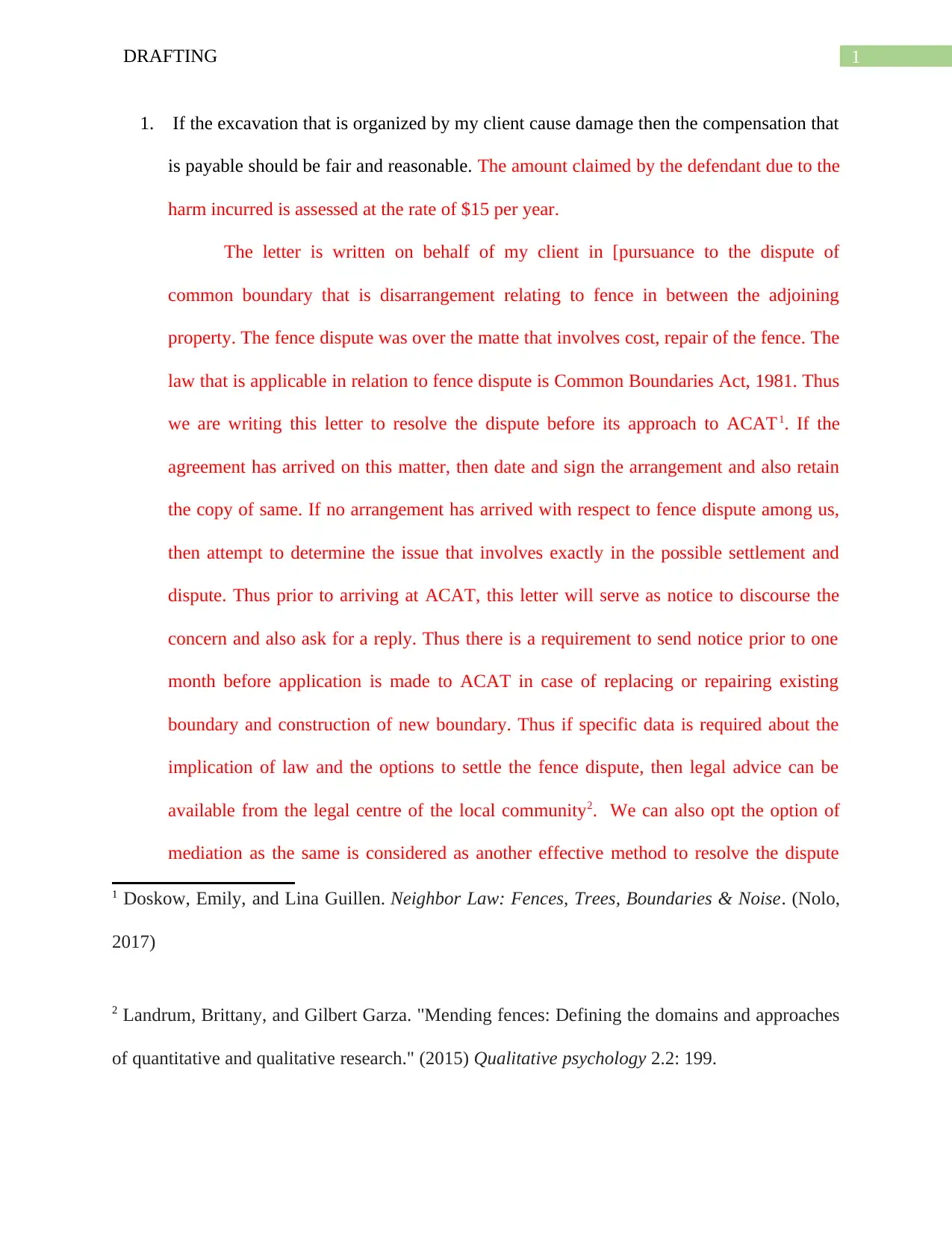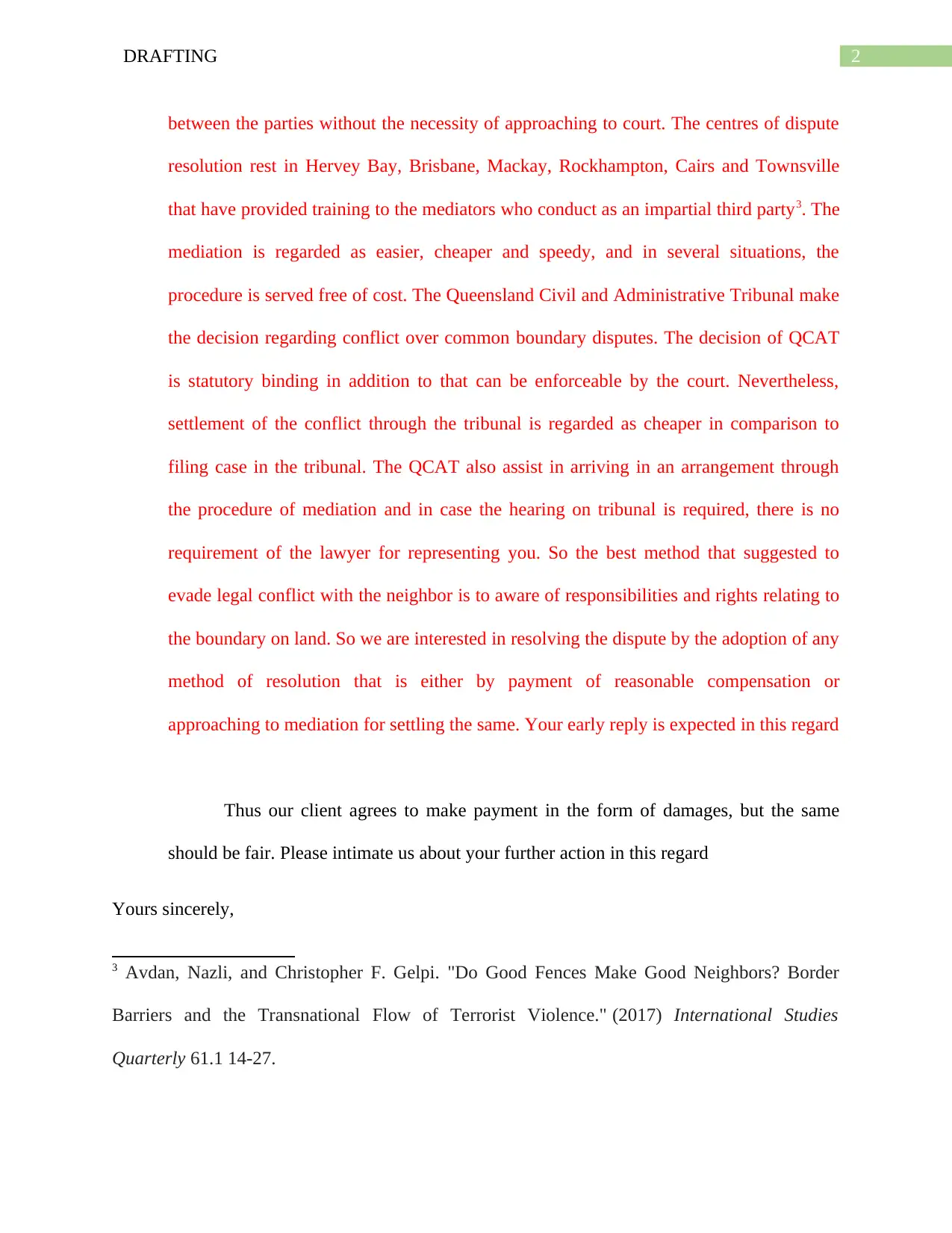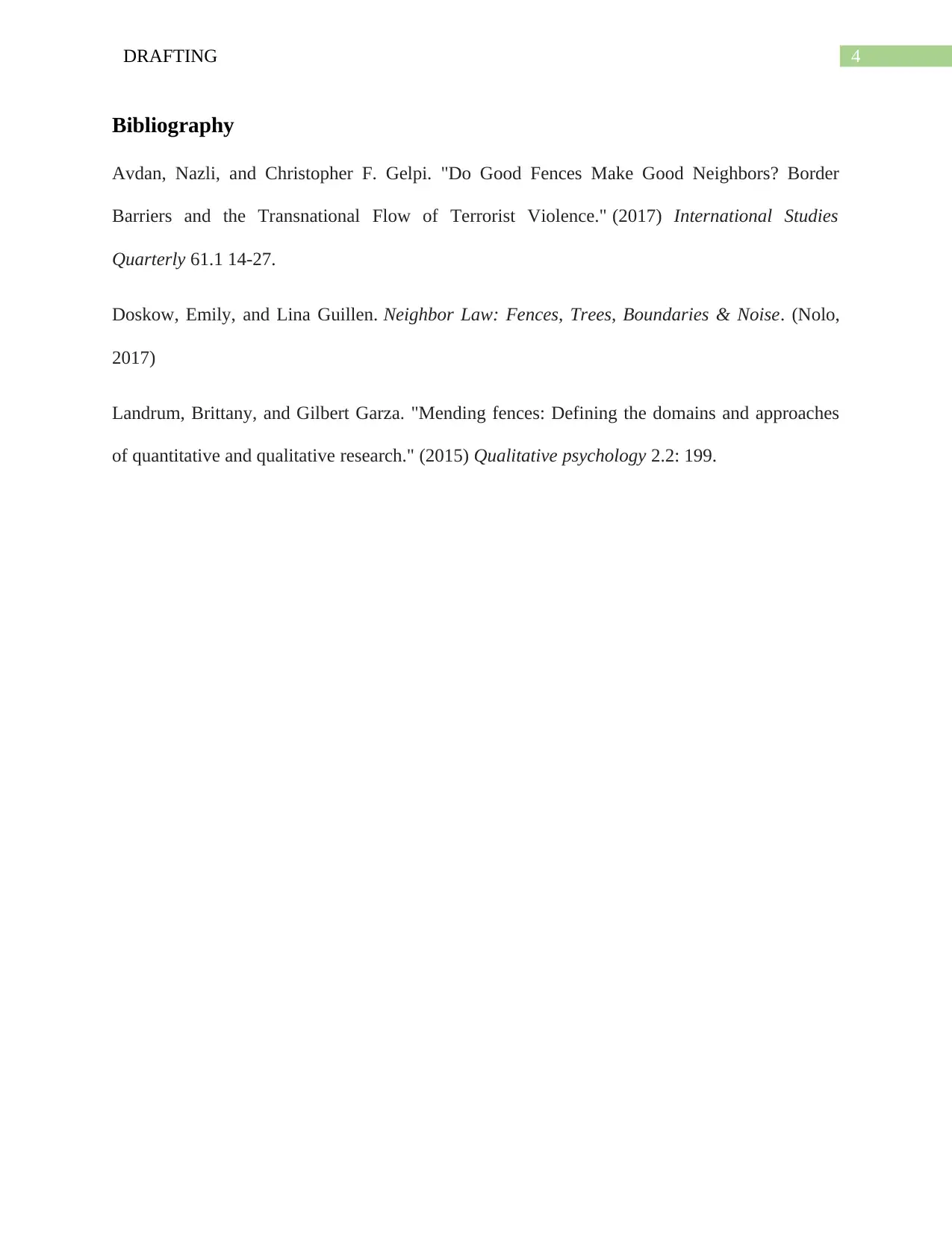Fence Dispute Letter: Abdul Al-Naser vs. Pavlovich and Rizo
VerifiedAdded on 2022/08/18
|5
|849
|15
Report
AI Summary
This legal letter, drafted on behalf of Mr. Abdul Al-Naser, responds to a claim made by his neighbors, Marisa Pavlovich and Jure Rizo, concerning a fence dispute and excavation work. The letter references the Common Boundaries Act 1981 and argues that the initial actions of the neighbors were not compliant with the act. It addresses the collapse of the fence, the allocation of repair costs, and the potential compensation for damages caused by excavation. The letter proposes a resolution through either reasonable compensation or mediation, emphasizing the importance of resolving the dispute before escalating to the Australian Capital Territory Civil and Administrative Tribunal (ACAT). It also provides information on the option of mediation and the potential for legal advice, and requests a prompt reply to resolve the dispute. The letter serves as a notice to discourse the concern and also asks for a reply. The document is written in response to the client's neighbour's claim for damages and the need for a resolution before approaching the ACAT.
1 out of 5






![[object Object]](/_next/static/media/star-bottom.7253800d.svg)